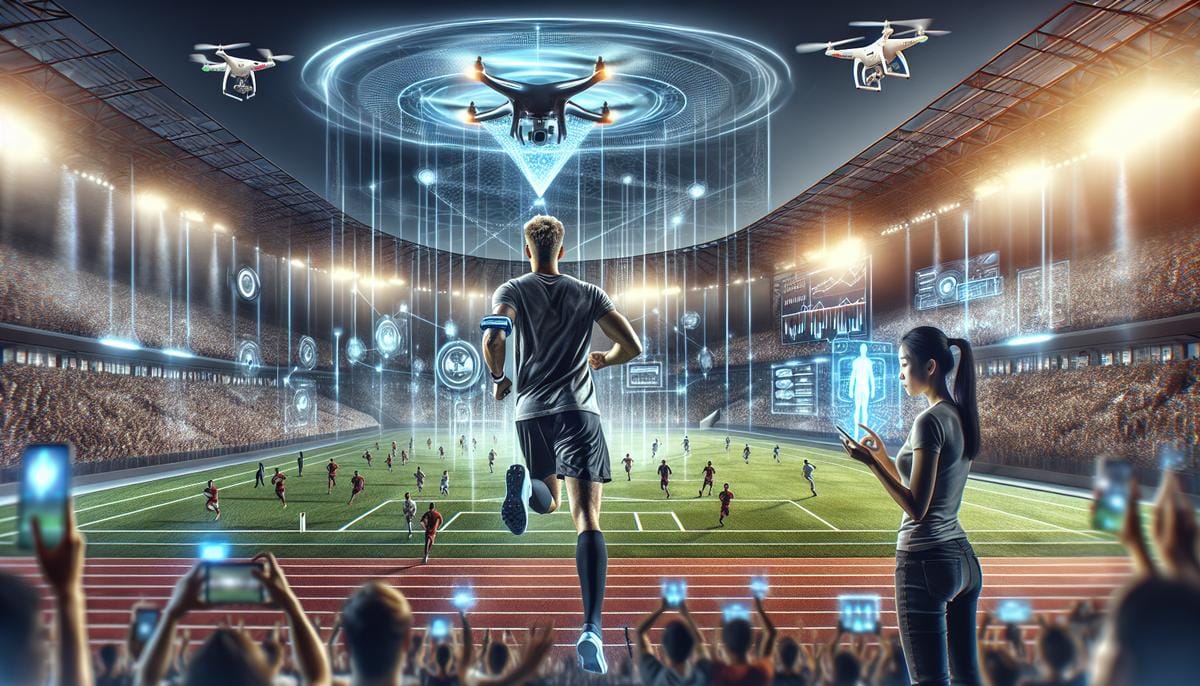Tech in Sports: Enhancing Performance and Experience

In recent years, technology has revolutionized the way we experience and participate in sports. From professional athletes to casual enthusiasts, technology has enhanced performance, safety, and entertainment in sports. In this article, we will explore the various ways technology is being used in sports and how it is changing the game for the better.
The Role of Technology in Sports Performance
One of the most significant impacts of technology on sports is the improvement of athletic performance. With the use of advanced equipment and training techniques, athletes can now train more efficiently and effectively, leading to better results on the field, court, or track.
Wearable Technology
Wearable technology has become increasingly popular among athletes, providing them with real-time data on their performance. Devices such as fitness trackers and heart rate monitors can track an athlete's physical activity, monitor their vitals, and provide feedback on their progress. This information can be used to optimize training and recovery, leading to improved performance and reduced risk of injury.
Video Analysis
Video analysis is another tool that has become essential for athletes and coaches. By analyzing game footage and practice sessions, athletes can identify areas for improvement and develop strategies to enhance their performance. This technology also allows coaches to provide more targeted feedback and adjust training regimens accordingly.
Biofeedback
Biofeedback is a technique that uses technology to provide athletes with information about their body's physiological responses to training and competition. By monitoring factors such as heart rate variability and muscle activity, athletes can learn to control their body's responses and improve their performance under pressure.
Technology in Sports Safety
Another area where technology has made a significant impact is sports safety. With the use of advanced equipment and monitoring systems, athletes are now better protected from injuries and can recover more quickly when they do occur.
Protective Gear
Technological advancements have led to the development of protective gear that is lighter, more comfortable, and more effective at preventing injuries. Helmets, pads, and mouthguards are now designed using advanced materials and manufacturing techniques, providing athletes with better protection without hindering their performance.
Injury Monitoring and Treatment
Technology has also improved the way injuries are monitored and treated. Wearable sensors can track an athlete's movements and detect any changes that may indicate an injury. This information can be used to prevent further damage and guide rehabilitation. Additionally, new treatment methods such as cold laser therapy and platelet-rich plasma injections have been developed, allowing athletes to recover from injuries more quickly and effectively.
Enhancing the Fan Experience
Technology has not only improved the performance and safety of athletes but also the experience of sports fans. With the use of innovative technology, fans can now enjoy sports in new and exciting ways.
Virtual and Augmented Reality
Virtual and augmented reality technology has transformed the way fans watch sports. By wearing a VR headset, fans can now experience games as if they were right on the field or court. Augmented reality apps also allow fans to access real-time stats, replays, and other interactive content during a game, enhancing their viewing experience.
Online Streaming
Online streaming has made it easier for fans to watch their favorite sports from anywhere in the world. With the use of streaming services and social media platforms, fans can now access live games, highlights, and exclusive content on their devices. This has also opened up new opportunities for sports organizations to reach a wider audience and generate additional revenue.
Interactive Stadiums
Stadiums are also becoming more technologically advanced, providing fans with a more immersive and interactive experience. From giant video screens and high-speed Wi-Fi to mobile ordering for food and drinks, stadiums are now equipped with the latest technology to enhance the fan experience.
Conclusion
Technology has had a profound impact on sports, improving the performance and safety of athletes and enhancing the experience of fans. As technology continues to evolve, we can expect to see even more innovative applications in the world of sports. Whether you are an athlete, coach, or fan, technology is changing the way we experience and participate in sports, making it more exciting and enjoyable for everyone involved.


